A decade ago then-mayor Pedro Segarra stopped fighting to keep a quieter north-south road open for pedestrians and cyclists, and the barricades went up in November 2013.
At the time, the Connecticut DOT sang a little song about how it would mitigate this damage by creating an east-west pedestrian/cyclist path. Nevermind that east-west is not north-south, let’s look at how this path appears ten years later.
At the entrance on Flower Street, there is no signage telling people where the sidewalk under the Aetna viaduct goes. Since we’ve been firmly in the wayfinding era, it’s strange that there’s nothing on either end.
The vegetation that was added?
Well, they did move the planters into locations where plants and trees would get sunlight, but it’s hard to tell if any other maintenance has happened. If you recall, the planters were originally placed under the elevated highway — I’m guessing by someone who never learned that plants need at least a tiny but of sunlight to survive.
Of everything there, it looks like only one tree is healthy.
Does the path provide a detour for those biking or walking?
Sure.
Is it pleasant? Is it something anyone should list on their resume?
If you wondered why another route was and is desirable, take a look at the “bike lanes” on Broad Street:
This is how the bike lanes have looked for well over a year, despite 311 being flagged multiple times. The sidewalk is equally covered in loose gravel/asphalt.
For those just tuning in, because let’s not assume everyone in Hartford right now has any knowledge of what went down before they arrived . . . why was Flower Street closed? Was it to enable better connectivity? Enliven a street? Improve the culture of an area?
No.
What we were told is that sight lines at the Flower Street and railroad (and at the time, incoming CTfastrak) crossing were insufficient and that this would cause a problem with the addition of buses and increase in rail service. There were meetings. Some officials were condescending to residents, as if we could not possibly understand basic safety. The mayor at the time was on board with fighting the closure until he wasn’t, which was how he operated during his entire tenure: constant flip-flopping.
The disconnection of Flower Street seems as questionable at the end of 2023 as it did in 2013.
At-grade crossings at Hamilton Street in Hartford and Oakwood Avenue in West Hartford, for instance, remained open and available to drivers, cyclists, and pedestrians, and while someone could argue that sight lines at either location are better, the truth is that at Flower Street, trains are traveling much slower because they are coming in and out of the station. You wouldn’t want to stand in front of one, but you’d have a better chance of dodging a train here than in the other two locations. And the safety mechanisms at Hamilton and Oakwood aren’t great. There are no fog lines on Hamilton, which mean drivers aren’t directed to literally stay in their lane, yet there’s no distinct sidewalk here either. It’s easy enough to tell if a train is coming because of the lights and cross arms, but the crosswalk signal that’s more useful for alerting pedestrians to CTfastrak traffic can be hard to see because of distance and how pedestrian signal heads are aligned with other signs in area. Oakwood, quieter than Hamilton, also has no fog lines; there are also no ped heads here helping pedestrians manage the CTfastrak. Perhaps there was less foot traffic here than at Hamilton because it’s not right next to a large grocery store, but there’s a mid-size grocery nearby on New Park Avenue, and with the addition of new housing, is likely to only get busier.
Go through the RealHartford.org archives for the blow-by-blow of the Flower Street nonsense, but what it came down to was that the CT DOT pretended to care about the impact of this closure by saying it would “mitigate” the impact by creating a linear path. The photos above show that path, which as far as I can tell, only consisted of the addition of unhelpful signs (“path narrows”), a strange “park” that basically looks like a place for Aetna employees to hang out and smoke, and giant planters that receive no attention.
In downtown, Pratt Street is bustling. The difference: it’s open to people who are walking/rolling or cycling in, there’s effort made for the space to be presentable and feel like a place someone would want to be. None of what has passed as “good enough” in Frog Hollow would cut it in downtown.
The DOT knows it did residents wrong here. Unlike, say, the entombed Park River, it’s much less complicated to re-open Flower Street to pedestrian/cyclist traffic if decision-makers wanted to do this. In the meantime, the DOT could come back out to their laughable “mitigation” path and redo it so the space is something anyone working at the DOT could be proud to attach their name to.
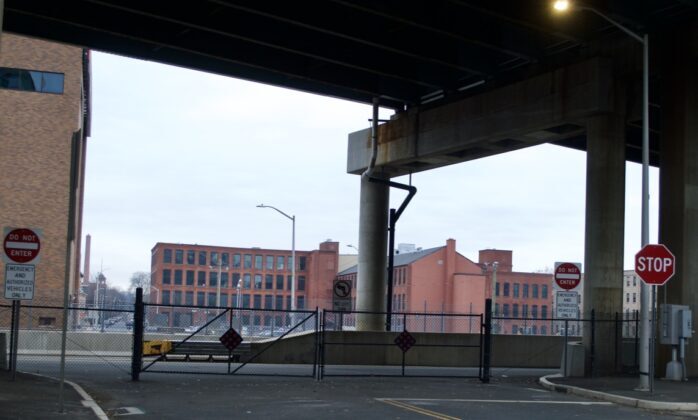
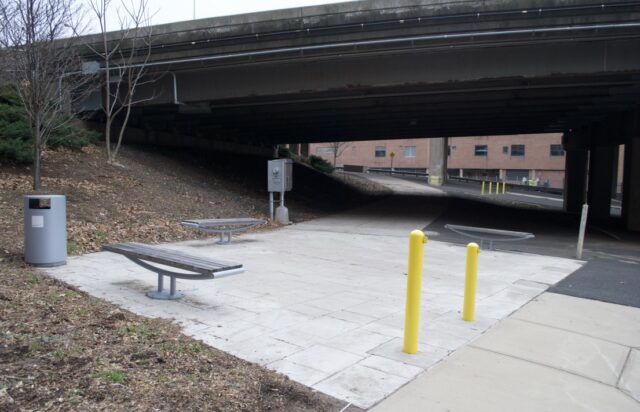
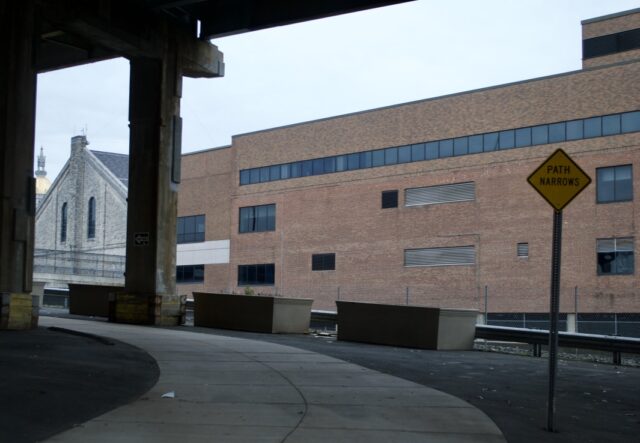
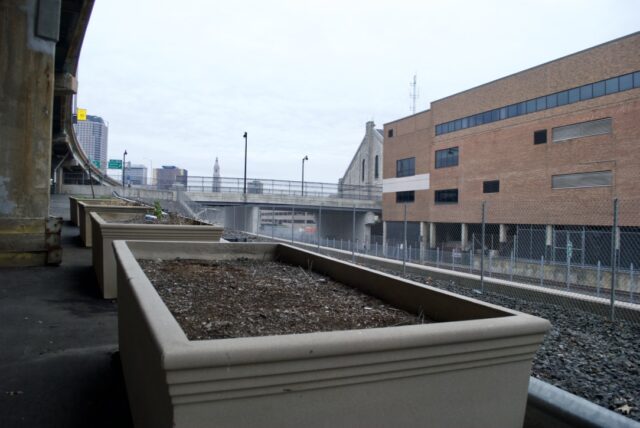
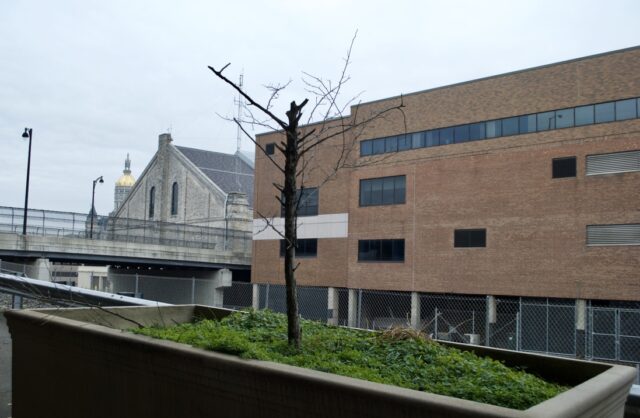
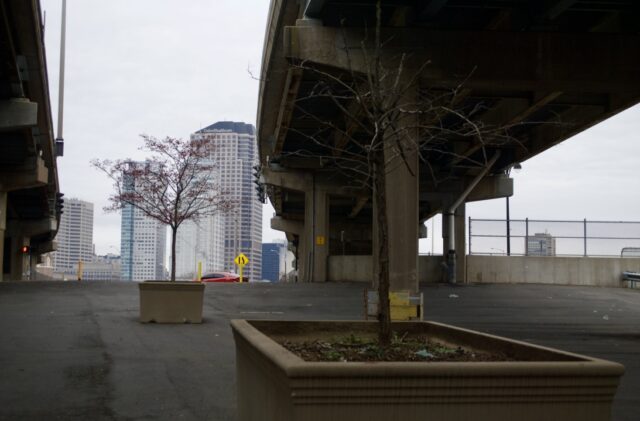
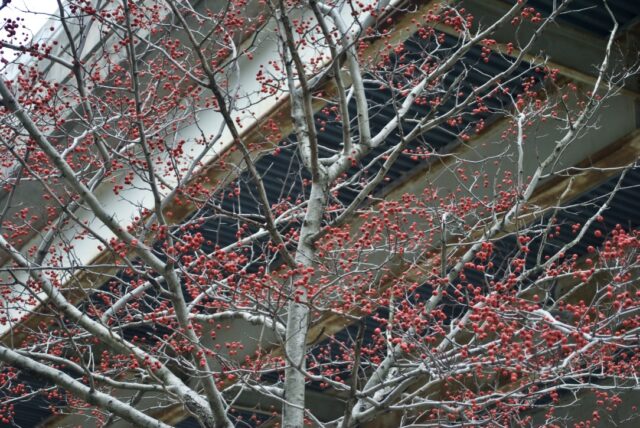
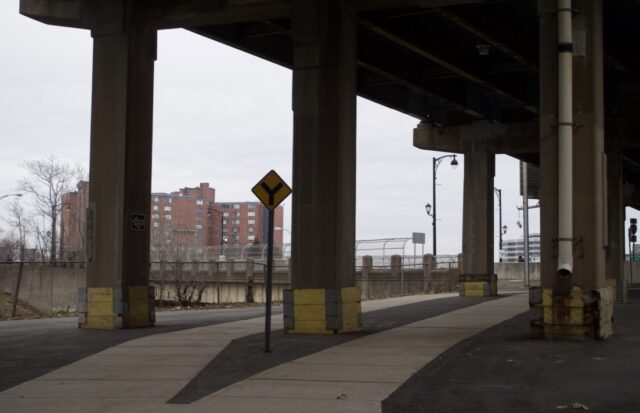
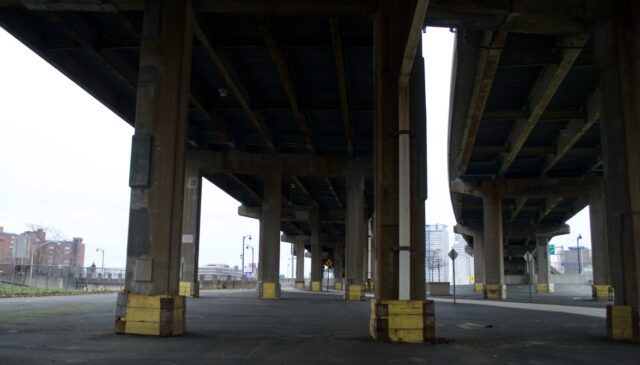
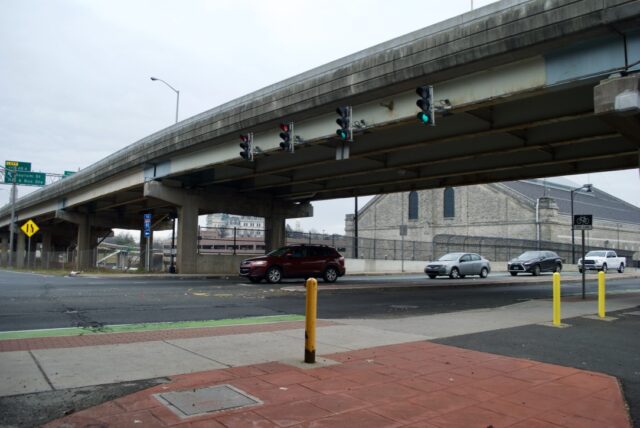
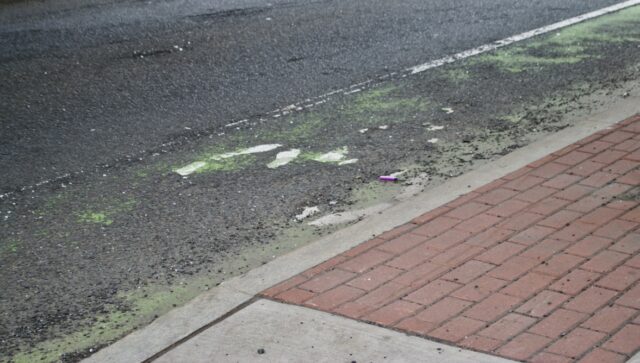
Echevarria
What a waste of money